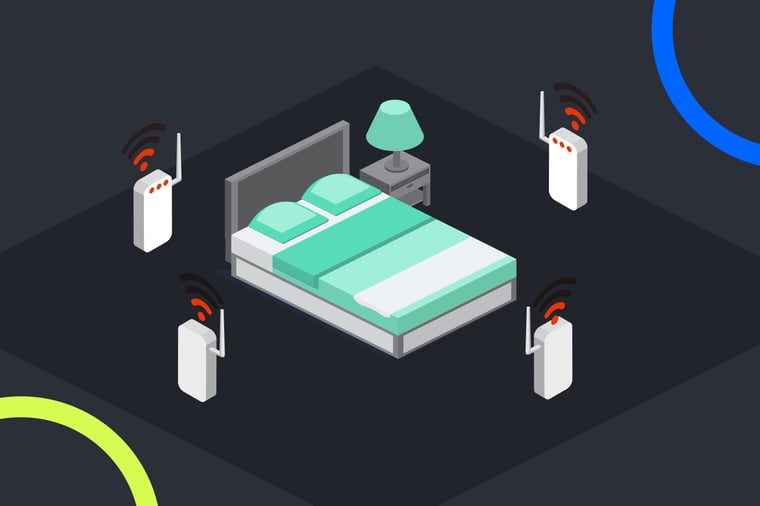Thinking out loud: Do WiFi promises offer the right thing?

I’ve been thinking a lot about WiFi promises lately—more specifically, about their rising popularity and how much weight they actually hold.
In today’s competitive landscape, ISPs are looking for innovative ways to attract new customers and retain their current subscriber base. Price and speed as differentiators are a thing of the past—instead, those leading the pack are relying on their ability to deliver quality service to grow market share. And from this need, the WiFi promise was born.
The WiFi promise, sometimes called a WiFi guarantee, is quite simple: It promises WiFi coverage throughout your entire home. In theory, I understand the value of a WiFi promise. But in practice, it’s a bold commitment to make when the fate of WiFi connectivity lies entirely in the subscriber’s home network setup.
Some of the biggest ISPs around the globe are implementing their version of the WiFi promise—with one key similarity. They almost exclusively focus on resolving WiFi connectivity issues rather than delivering an exceptional WiFi experience.
For example, one of Canada’s largest and most innovative ISPs promises WiFi in every corner of the home, but it’s not without a few caveats:
- Their modems promise to provide coverage throughout the entire home especially when placed in a central location.
- They call out what to do when experiencing WiFi problem areas, which is to contact their technical support team to arrange an assessment of the home to optimize modem placement and determine if pods may enhance the WiFi experience.
The promise itself centers around fixing connectivity when it goes wrong. Shouldn’t this be the basic foundation of running a subscriber-centric business? It isn’t enough to promise that you’ll be there when things go wrong. Subscribers want to know that you can provide a high quality of service that won’t require intervention from support or technician teams.
A real WiFi promise needs to be proactive—and that starts at install.
Imagine if you were able to promise your subscribers WiFi that works the way they need it to, right from day one. What if your subscribers didn’t have to wait and see if they run into connection problems? What if, during installation, your technicians could identify potential issues and plan accordingly? What kind of impact would a proactive stance to WiFi challenges have on your business and subscribers alike?
To transform their business model from reactive to proactive, ISPs need to understand what causes WiFi disruptions. And here’s what I learned working at RouteThis, a company that specializes in solving WiFi connectivity issues: I know that if a subscriber’s home isn’t optimized for WiFi connectivity, their quality of experience will suffer.
I also know that there are four main ways to optimize a home network environment: proper plan selection, router placement, the correct number of WiFi extenders, and proper placement of extenders. But I didn’t know this before working at RouteThis or when I had my internet installed three years ago. Here’s what my installation process looked like:
- The tech arrived at my house, identified where the wires came through and got to work. This resulted in a router installed in the basement of my three-story home in a cupboard next to my electrical panel.
- My technician recommended WiFi extenders. My house is 1,700 sq. ft., and four extenders felt like a bit much. But I bought into what I was being sold, and thank goodness I did—it really makes for the best part of this story.
After my installation, my connection quality suffered so I took it upon myself to fix it. For one year, prior to working at RouteThis, I kept all four of my WiFi extenders in our primary bedroom. Each one was plugged into a separate outlet on a different wall to create the perfect environment for superior WiFi connectivity—or so I thought.
Spoiler alert: That’s not how WiFi extenders work and my connection saw no improvement.
Taking things into my own hands didn’t make things better for me. I had no clue what I was doing or how my extender placement would impact my WiFi experience.
So whose responsibility is it to ensure that I know how to set up my WiFi network? That might be up for debate, but I can tell you that my lack of WiFi knowledge had a far greater impact on my ISP than it did on me.
I churned, impacting my ISP’s business—loss of ARPU, loss of upsell because I needed more extenders, and a tarnished reputation.
This brings us back to my original proposal. Imagine if ISPs could make a promise and prevent issues rather than just solving for them. I imagine it would mean better connectivity, fewer calls into support teams, less churn, and happier subscribers.
But what do I know? I’m the girl that put four WiFi extenders in her bedroom.
